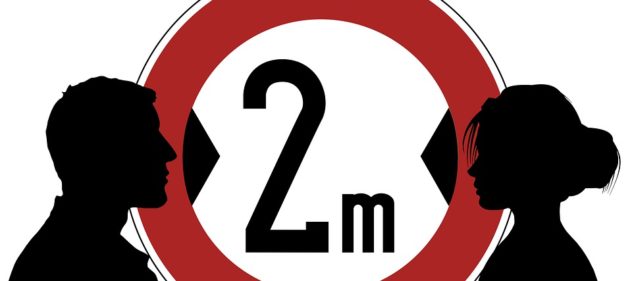Vocabulary:
- proximity /prok-SIM-i-tee/
- aerosol /AIR-uh-sawl/
- contagious /kuhn-TEY-juhs/
- one /wuhn/
- transmission /trans-MISH-uhn/
[noun] – the state of being near in space or time
What drew her to the area was its proximity to the capital.
[noun] – a mixture of particles (extremely small pieces of matter) and the liquid or gas that they are contained in, that can spread through the air
The research’s focus is entirely on the question of aerosol particle size analysis.
[adjective] – (of a disease) able to be caught by touching someone with the disease or something the person has touched or worn, or (of a person) having this type of disease
The new disease proved to be a contagious one so people are advised to practice social distancing.
[pronoun] – any person, but not a particular person
One should always be careful of the information he or she posts on social media.
[noun] – the process of passing something from one person or place to another
The virus’s usual transmission is through sneezing.
Science says that the closer in proximity you are to an infected person, the greater the risk of transmission. The World Health Organization recommends a safe distance of at least one meter, while others are opting for 1.5 to 2 meters. Another important thing to note is the time you spend in close distance with an infected person.
So where does the two-meter rule of social distance come from? Interestingly, this rule can be traced back to a 1930’s research. According to it, when somebody coughs or sneezes, droplets of liquid released will either evaporate in the air or fall to the ground due to gravity. The majority of the droplets would land within two meters. Therefore, scientists regard proximity and surface contact as modes of virus transmission.
But lately, some scientists are worried if the coronavirus can only be transmitted through droplets. If the virus could also be transmitted through tiny particles called aerosols, then it means that it could be carried over farther distances. For the US Centers for Disease Control, the spread of viruses through aerosols is still undetermined. Moreover, it’s not yet confirmed whether viruses that were spread further than two meters are considered to be contagious.
Governments in different countries are ordering their citizens to wear face masks as a precaution against the coronavirus. In places where the two-meter rule of social distancing cannot be applicable like in workplaces, face masks may slow down the transmission of virus and may give confidence to employees to return to their jobs, according to UK Prime Minister Boris Johnson.
We do not have definite answers yet to know what exactly is the “safe” distance. Scientists are still finding out how the virus can be carried and if it’s still infectious after reaching a certain distance. But in the meantime, wearing face masks and maintaining social distance of at least two meters are some of the measures one can do to prevent virus transmission.
Comprehension Questions:
- Amidst the pandemic, the World Health Organization suggests to distance yourself from people by how many meters?
- If viruses could also be spread through aerosols, what will happen?
- How do coughing and sneezing spread viruses?
- What did the UK Prime Minister Boris Johnson say regarding the use of face masks in workplaces?
- According to the article, what are the things one can do to prevent virus transmission?
Discussion Questions:
- Do you agree to keep social distance by 2 meters? Why or why not?
- How did your daily routine change since the start of the COVID19 pandemic?
- What do you do to stay safe from the virus?
- What do you think of the news coverage of the COVID19 pandemic?
- What questions would you like to ask coronavirus experts?
